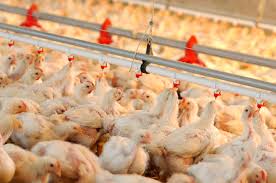Having grabbed 30% of the local chicken market, and killed thousands of local jobs, chicken importers are claiming victory and arguing that the assault on local jobs should continue.
Livestock market trends- South Africa-
- Hits: 1567
The domestic beef and mutton market remained fairly stable this week with marginal price movements while the poultry market moved downwards and the pork market sideways.
Beef market trends
International beef market
Prices in the US beef market trended downwards this week, the largest week-on-week movement in price was striploin which declined by 8.7%. Compared to a year ago prices are much lower with prices of rump, striploin and topside between 15% and 18% down. The USDA cold storage report indicates that the frozen beef stocks are 5% down from last month and 9% down from last year. The wet weather in the US has resulted in spikes in the grain prices resulting in increased production costs of beef as feed costs increase which has added pressure to the beef prices. President Trump has announced the launch of a support system amounting to $16 billion to assist US farmers affected by the US/China trade war. The New Zealand beef market is experiencing increased demand from China with beef exports to China increasing by 3 600 tons compared to a year ago. It is expected that there will be extreme protein shortages due to the African Swine Fever outbreak, this has resulted in increased speculative buying of New Zealand beef.
Local beef market
The domestic beef market remained fairly stable this week with marginal price movements. The price of class A and class C beef increased slightly week-on-week while the weaner price declined by 0.6%. The weaner price is almost 21% lower than prices a year ago. The import parity has declined by 4.9% compared to last week.
Outlook
The US market is hoping for a slight bump in demand due to grilling season which will provide support to prices. The announcement of the trade assistance package by Donald Trump has indicated that there is no end in sight for the US/China trade war. Domestic beef prices are expected to remain fairly stable for May. From June the class C price is expected to increase while the class A price is expected to decline, weaner calf prices are expected to remain stable for the next three months.
Sheep meat market trends
International sheep meat market
Prices for New Zealand lamb and ewes increased week-on-week by 1.4% and 1% respectively. The New Zealand market has experienced high demand for lamb exports with their export values for this season to 11 000 tons ahead of last season, despite concerns at the start of the season. New Zealand lamb exports to China constitute 41% of this season's exports. Export demand from the EU is lagging behind last season's levels, however increased demand has been seen coming from Germany and the Netherlands. The import parity for lamb increased by 0.2% while the import parity for ewes declined by 0.2% week-on-week. The price for mutton ribs has increased by 2.2% week-on-week but is down by 5.6% year-on-year.
Local sheep meat market
In the local market this week the price for class A remained relatively stable with only a 0.2% increase in price while the class C price experienced a nice increase of 3% week-on-week. The price of feeder lambs declined by 0.3% this week, the current price is 17.1% lower than prices a year ago. The number of animals slaughtered this week is 27.4% more than last week. The price of dorper skins has increased by 7.9% week-on-week, prices are almost 17% higher than a year ago.
Outlook
Demand for New Zealand lamb is expected to remain strong which will lend support to international prices. The domestic price for class C is expected to follow an upward trend from May onward due to increased seasonal demand. Domestic prices for Class A and feeder lambs are expected to remain fairly stable for the rest of May going into June, in June the prices are expected to experience an increase before stabilising at that increased level in July.
Pork market trends
International pork market
The African Swine Fever Outbreak in China continues to be an issue internationally and seems to be providing support for international prices. Week-on-week the price of pork carcass, loin and ham each increased by approximately 2% while the US rib price declined by 3.9%. There is concern in the US market as China's preferred supplier for hog replenishment is the EU. Traders in the US are becoming concerned that the US will not regain all of the Chinese market share that they have lost during these US/China trade negotiations. The import parity for ham remained fairly stable this week while the import parity for ribs declined by 4.4% week-on-week. The USDA Cold Storage report indicates that the stock of frozen pork is 2% higher than last month's stock but is down by 2% compared to a year ago. Trump has announced the launch of a trade assistance package for US farmers affected by the US/China trade war, $100 million is dedicated for the establishment of new export markets through the Agricultural trade Promotion Programme (ATP).
Local pork market
The domestic pork market moved sideways this week with prices remaining stable as only marginal increases in prices were experienced. Year-on-year the price of porkers has increased by 3.7% while the price was baconers has increased by 10%. Compared to last week 5.9% more pigs were slaughtered this week, this is 25.8% more than the number of pigs slaughtered a year ago. The AMIE price for loins has increased by 26.1% compared to a year ago.
Outlook
The international pork market is expecting continued high levels of volatility in the short term. The US market still lacks certainty on which way the market will move with continued pressure from the US/China trade war as well as concerns regarding African Swine Fever. Prices in the domestic market is expected to remain fairly stable for the next three months. Domestic prices may experience a slight dip in June before picking up again in July to follow an increasing seasonal trend.
Poultry market trends
International poultry market
The US poultry market traded positively this week. The price of whole birds remained stable with a slight increase in price while the price of chicken breasts increased by 3.2% week-on-week. Fresh and frozen MDM prices increased by 3.8% and 1.2% respectively week on week. The price of US leg quarters declined slightly this week while the price of EU leg quarters increased. Compared to a year ago the price of US whole birds is 13.6% lower. The international poultry prices are expected to continue receiving support due to the African Swine Fever outbreak in China. The USDA cold storage report indicates that frozen chicken stocks are up 3% from last month. The $16 billion trade assistance package announced by Trump includes $14.5 billion for direct payments to producers through the Market Facilitation Programme (MFP) and $1.4 billion for commodity purchases through the Food Purchase and Distribution Programme (FPDP).
Local poultry market
Domestic poultry prices moved downwards this week. Compared to last week the price of frozen whole birds declined by 1.5%, fresh whole birds declined by 1% and Individually Quick Frozen prices declined by 1.3%. Increasing grain prices are expected to put the domestic poultry prices under pressure.
Outlook
International poultry prices are expected to experience continued support as demand increases due to the protein shortage following the African swine fever outbreak. Domestic poultry prices are expected to continue their decline for the rest of the month. In line with seasonal trends prices of whole frozen birds are expected to increase from June onwards while prices of whole fresh and IQF are only expected to increase from July.
Hide market trends
Local hide market
The domestic hide price for the week ending 24th May 2019 remained fairly stable at R1.72/kg on average, this is 0.15% lower than the average price last week. Current prices are 77.9% lower than prices a year ago. The RMAA price for feedlot hides declined by 2.4% while the RMAA price for field hides increased by 2.5% week-on-week.
Outlook
With domestic hide prices almost 80% lower than prices a year ago the domestic hide market continues to be under pressure. The global market for hides is struggling with the needed relief not expected in the short term.
In a cruel irony in the Chinese Year of the Pig, outbreaks of African Swine Fever are forcing huge culls that could send pork prices to levels never seen before.
The US beef market traded negatively this week with prices for topside, rump and striploin declining by 3.4%, 5.8% and 1% respectively.
World food prices rise in April 2019-
- Hits: 1165
In April global food prices rose to their highest level in almost a year, led by meat and dairy prices.
The South Africa-China wool trade story is back in the headlines, but this time around in a good way. Nearly two months since the Chinese authorities temporarily suspended wool imports from South Africa because of the foot-and-mouth disease outbreak earlier in the year, the country’s authorities issued a notification on May 8 stating that the ban will be lifted that same day.
Newsletter Subscribe
AGRI NEWS NET "LIVE" FEED
- CRA Group with it's media AGRI NEWS NET, FARMINGPORTAL.CO.ZA are globally linked with 30 International media's around the world, (30million) sharing exclusive news written and compiled by our News Team together with our team travelling South Africa. Our News is translated in German for the huge parts of the Europe Farming community.
- CRA Media independence is the absence of external control and influence of any other media. Our capacity is to "make decisions and act according to its logic," and distinguishes us from the vast majority of media- Committed, focused and always on time- Good positive News you can trust- We not part of the negative sensational news media of the 2025 century.
- This is AGRI NEWS NET- the world of Farming and Agriculture in your hand. "Good" News you can Trust- Updated 7 days a week- bringing you the latest News in Farming and Agriculture from all over the world. Tomorrow at 6 AM South African time you can start browsing again.
- First things first, scotch is actually a whiskey, er, whisky. Whiskey is the spelling in the United States and Ireland. Whisky is the spelling in Canada, Japan, and Scotland. What sets Scotch whisky apart from other whiskies is that Scotch whisky is entirely produced and bottled in Scotland. There is no wrong way to drink Jameson Irish Whiskey but, we do ask you to drink responsibly.
Popular News Tags
AGRI NEWS NET AUDIO CAST Feeding-
- What Needs to Change in Farming and Agriculture in 2025
- AGRI NEWS RUSH - News Headlines of the Week 18/01/2025
- Farmer safety in South Africa in 2025
- The Economics of Farming and Agriculture in South Africa 2025
- The global wine market 2025
- AGRI NEWS RUSH - News Headlines of the Week 11/01/2024
- Artificial Intelligence: All That Glitters Is Not Gold
- GLOBAL WATER OUTLOOK TO 2025 Averting an Impending Crisis

















